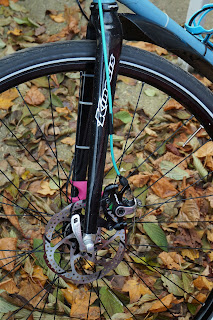Here’s a few shots from
December’s shoot at the Cottage Studio http://www.thecottagestudio.co.uk/
with Elle Beth http://www.ellebethmodel.com/ .Over
the past couple of weeks, I’ve been commissioned by other models elsewhere in
the UK, seeking to expand their port-folio in 2018.
Some follow the fine art
narrative, others seeking something more visually dramatic, or indeed,
provocative in tone. I’m happy doing either, considering each on their own
merit. Nothing (legal) is off limits, save for gratuitously
pornographic.
Salty and slippery stuff licked
the first application of nasty lube clean after 300miles, so I topped it up and
resumed testing. Cleanliness is better than I was expecting, although
predictably, my chain’s outer plates were sporting a gungy beard. Less
problematic on a fixed/hub/single speed transmission. However, I’d be wiping
these weekly on a derailleur geared build to avert component consumption.
Those 38mm Soma are delivering
precisely what I was expecting from a tyre marketed as for road and commuting
duties. “Gravel” has been a big thing for a while and for me, has captured the
original spirit of mountain biking. Vernier in hand, they actually came closer
to 35mm, which didn’t surprise me, having learned they’re made for Soma by
Panaracer. However, I was pleasantly surprised to discover they’re also
available in more traditional 23 and 28mm road sections too.
The Shikoro takes its name
from the neck armour used by Samori warriors, inferring a tough, puncture
repelling casing. The polyamide puncture repelling bead runs edge to edge,
rather than simply covering the centre strip. Bodes well, given the roads can
be decidedly unforgiving this time of year
Supple, leach like cornering
prowess and a magic carpet ride. Unlike other vehicles, bicycle tyres needn’t
have any tread. The Shikoro is basically a low-profile gravel pattern, which
coupled with the puncture repelling qualities, suggest a tyre best suited to
hard-pack/dry gravel/cross meets, interspersed with longer sections of asphalt.
A decent quality slick (not to
be confused with bald) tyre, run at the correct pressures is arguably optimal
for tarmac duties. Thus far, traversing the same roads littered with thorns and
similar hedge clippings, hasn’t induced any nicks, or similar damage to the
casings, let alone punctures.
I was surprised by the
operating pressures, which range from 35-90psi, closer to that of a tubeless
system. In theory at least, this should cover the entire zodiac of riding
conditionals. Minimal rolling resistance on virgin asphalt, optimal traction on
loose, icy surfaces.
Obviously, rider (and luggage)
weight also play a part. Current trends
suggest an extra 1% pressure for every extra kilo. Working on this basis,
70-75psi should prove optimal. We’ll see. So far, run at their maximum, they
don’t feel remotely harsh, although by my reckoning, big tyres should be
compliant and comfortable at the upper end of their operating pressures.
The sudden resumption of
wintry weather proved an ideal opportunity to see just how well Schwalbe
Marathon 365 perform in the ice. Reassuringly well, it appears. Sure, spikes
add another level of confidence but run at 65psi, their wide profiles hugged
the tarmac, 15-17mph through the slushier stuff with no apparent skittishness.
In this context, their
additional girth isn’t a hindrance. Admittedly, the machine’s more upright
positioning also helps keep things on track.
This recent chill snap has
also made me grateful for these Lake booties, which are far more convenient
than overshoes when it comes to beating the brrr factor. These are MTB
versions, which also provide scope for more adventurous outings sans asphalt.
Not your bag but wanting a rugged set of boots that you can also do a day’s
work in? Take a look at Steve Dyster’s test of these Chrome Storm 415 https://www.sevendaycyclist.com/chrome-storm-415-cycling-work-boot .
Happy New Year!





















































